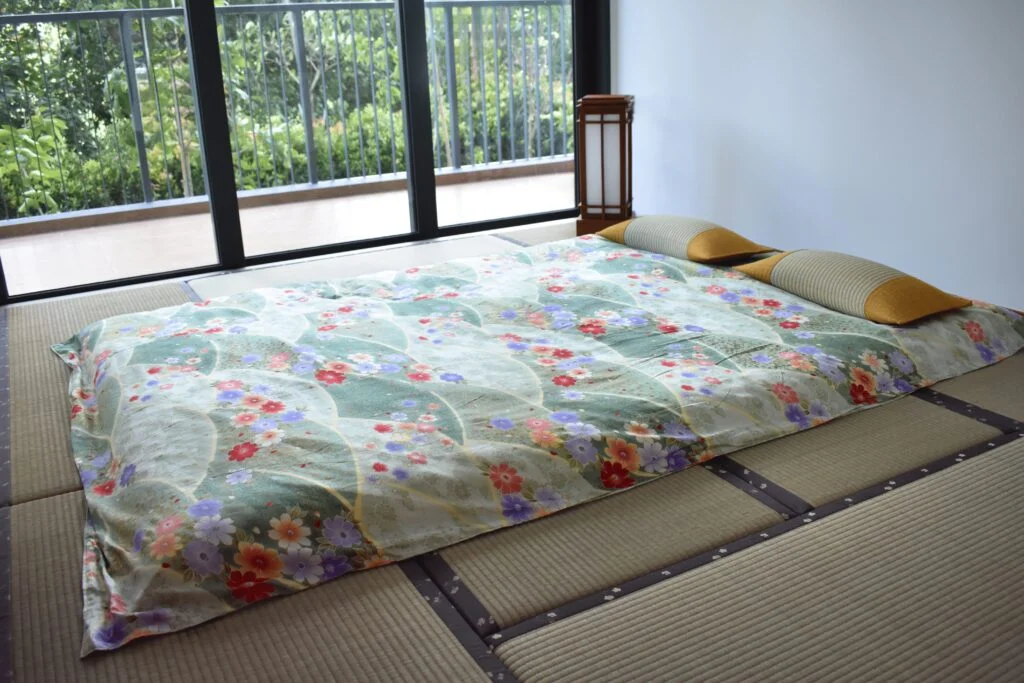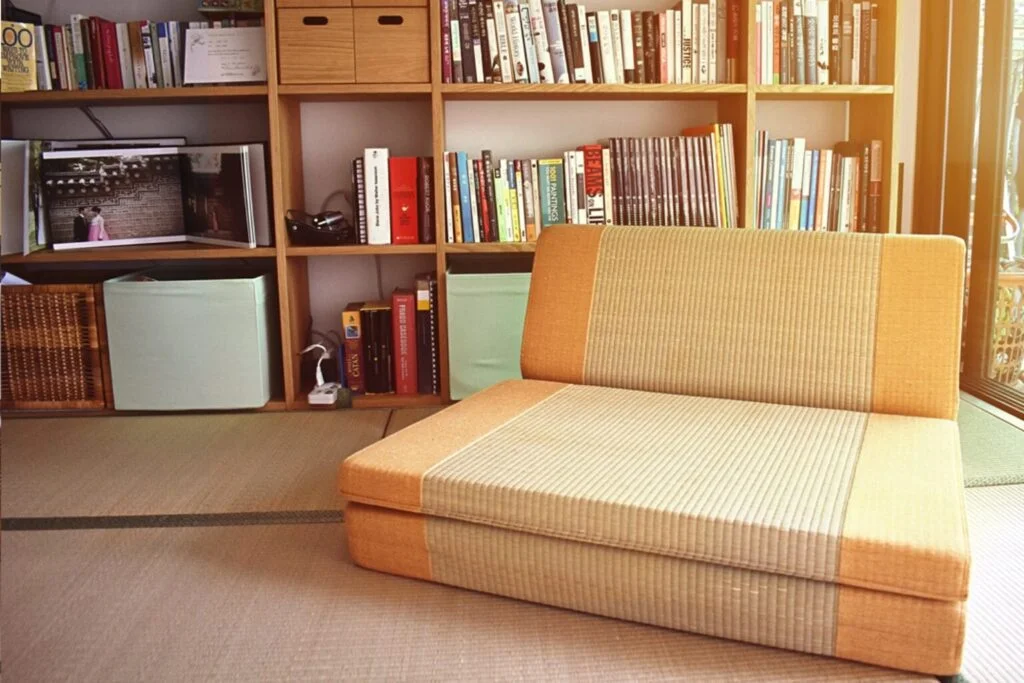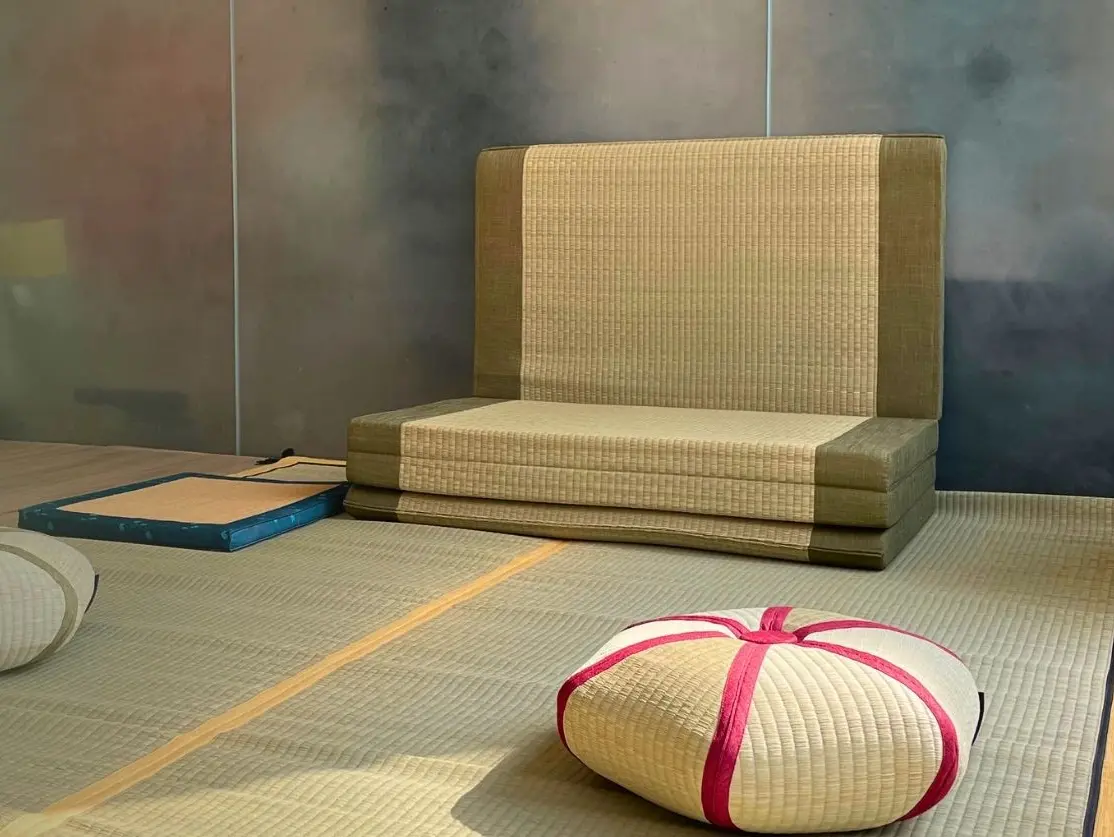In our quest for better sleep, we often overlook the wisdom of traditional practices. Japanese sleep culture, with its emphasis on firm surfaces and natural materials, offers valuable insights into achieving more restful and rejuvenating sleep. Here are four ways to enhance your sleep quality using time-tested Japanese sleeping methods.

1. Embrace Firmer Foundations
Contrary to popular belief, extremely soft surfaces aren’t great for sleep quality. The lack of support can leave you in positions which promote poor posture and lead to stiff and aching backs. Sleeping on firm surfaces meanwhile, such as that style practiced in Japan by using a Shikibuton futon on a firm surface, helps maintain proper spinal alignment during rest. This firm support evenly distributes your weight and allows your body to find its natural position, potentially reducing morning stiffness and back pain.
The key is starting with the right foundation. A premium Shikibuton futon, crafted with layers of pure cotton and traditional stitching techniques, provides the perfect balance of comfort and support. When placed directly on tatami or a firm surface, it creates an ideal sleep environment that encourages proper posture while still offering enough cushioning for comfort.

2. Create a Multi-Functional Sleep Space
One of the beauties of Japanese sleep culture is its adaptability and versatility. Traditional Japanese aesthetics combine minimalism with multifunctionality, ensuring each space can be utilised for a multitude of tasks. The innovative Tatami 9-in-1 Sofa Bed exemplifies this perfectly, allowing you to customise your sleep position based on your specific needs. Whether you’re dealing with acid reflux, poor circulation, or just need a different position for afternoon rest, having adjustable options can significantly improve your sleep quality.
During the day, use it in its upright position for reading or working, then transition it to a flat sleeping surface for nighttime. This versatility not only maximises your living space but also helps your body associate the area with different states of rest and activity, promoting better sleep habits.

3. Incorporate Calming Natural Fragrance
The connection between scent and sleep is well-documented, and traditional Japanese sleep systems take full advantage of this relationship. The Hinoki pillow, filled with natural cypress wood shavings, brings the calming effects of forest bathing (shinrin-yoku) directly to your bedroom. The gentle, evergreen aroma of Hinoki has been shown to reduce stress levels and promote deeper, more restful sleep.
Beyond its aromatic benefits, the Hinoki pillow’s natural antimicrobial properties create a cleaner sleep environment, while its unique filling provides comfortable support for your head and neck. This combination of therapeutic scent and proper support can help signal to your body that it’s time to rest, potentially reducing the time it takes to fall asleep. The fragrance of Hinoki is not the only calming fragrance in this setup, the natural aroma of Tatami woven from Igusa provides a grounding and stress-relieving touch to any room in your home.

4. Stay Cool And Comfortable
One often-overlooked aspect of sleep quality is temperature regulation. Waking up feeling uncomfortable due to hot bedsheets or freezing cold foam mattresses is not conducive to a good sleep. Tatami meanswhile excels in this area through the use of natural materials. The Igusa rush used in tatami naturally regulates temperature and humidity, while pure cotton futons allow proper airflow.
Making the Transition
Transitioning to a better sleep doesn’t have to happen all at once. Start by trying a firmer surface for naps using the Tatami Sofa Bed, or introduce the Hinoki pillow to your existing sleep setup. Gradually incorporate more elements of traditional Japanese sleep culture as your body adjusts.
Remember, quality sleep isn’t just about the hours you spend in bed – it’s about creating an environment that promotes natural, restorative rest. By incorporating these traditional Japanese sleep elements, you’re not just changing where you sleep; you’re embracing a holistic approach to sleep that has been refined over centuries.
